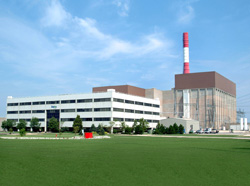Nuclear Reactors 300 - The NRC Performs Properly In Dealing With A Problem With Critical Valves At Nuclear Power Plants - Part 1 of 2 Parts
Part 1 of 2 parts
I have blogged about many accidents at nuclear power plants from minor problems to major disasters. Sometimes the problems are handled professionally and other times there are serious issues with the responses of the operators of the nuclear power plants. I have often complained of incompetence and dishonesty on the part of the Nuclear Regulatory Commission, the nuclear industry and the owners of nuclear power plants. Today I am going to talk about a problem with valves in emergency cooling systems and the response of various groups to those problems.
The two reactors at LaSalle are boiling water reactors (BWRs) which were put into operation in the early 1980s. The LaSalle reactors were an evolution of BWR/4 that had what is referred to as Mark I containment systems. The new reactors at LaSalle are known as BWR/5 with Mark II containment systems. In BWR/4 reactors utilize steam-driven high pressure coolant injection (HPCI) to supply “makeup” cooling water to the core in case a spall pipe connected to the reactor vessel breaks, the BWR/5 reactors use a high pressure core spray system (HPCS) powered by a motor to supply such makeup cooling water in case a pipe breaks.
The HPCS is not normally operating. It stays in standby mode as long as reactor operations are normal. The system has a motor driven pump that can pump water into the reactor vessel at a rate of seven thousand gallons per minute if necessary. There is a “suppression” pool inside the containment vessel that supplies water to the pump. In the event of a major drop in pressure in the reactor vessel, there are low pressure emergency systems such as the residual head removal and low pressure core spray pumps. However, if a small pipe breaks and leaks, the drop in pressure is not enough to trigger the low pressure emergency systems. When a small pipe breaks, the water drains into the suppression pool that supplies the HPSC pump. The motor for the HPCS can either be powered from the electrical grid outside the power plant or from onsite emergency diesel generators.
In January of 2013, the Tennessee Valley Authority turned a report in to the Nuclear Regulatory Commission under 10 Code of Federal Regulation Part 21 concerning a defect in an Anchor Darling double disk gate valve in the HPCI system at their Browns Ferry nuclear power plant. The next month, Anchor Darling, the manufacturer of the valve, turned in their own report under 10 Code of Federal Regulation Part 21 which stated that there was a design problems in their valve that could cause the lower disk to separate from the valve stem.
In April of 2013, the Boiling Water Reactor Owners’ Group (BWROG) sent a report to their members about the problems with the gate valve. The report suggested what could be done to monitor the valve and insure that it was operating correctly. In 2015, operators at LaSalle carried out the recommended monitoring of their gate valves operations and found not problems. In 2016, the (BWROG) sent out a revision of their 2013 report on the gate valves based on the work of a nuclear plant owner. Workers at the plant had disassembled twenty six gate valves and found problems in twenty four of them. In February of 2017, LaSalle workers tested the HPCS gate valve in Unit 2 and found no problems.
(Please read Part 2)
